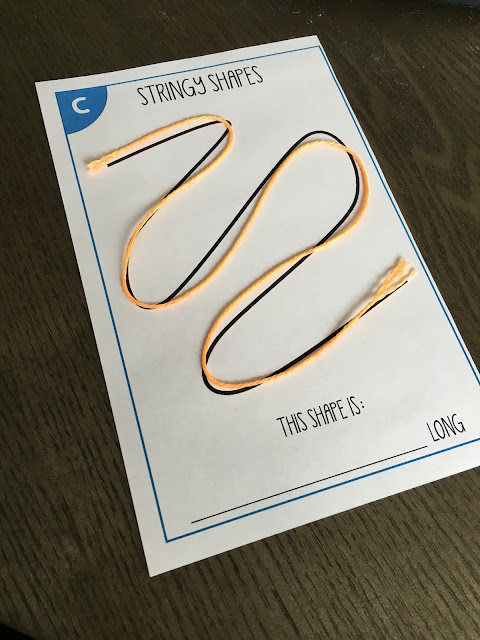Nonstandard Measurement can be such a FUN math unit in the classroom. It is relatively easy for students to learn and master and it can be a nice break from the continuous addition, subtraction, and place value that we teach all year long.
I wanted to share with you some of my favorite lessons and activities!
Car and ramp races!
This is a simple lesson that gets students measuring and building ramps - a little STEM action for the win! My students work in pairs to build ramps using a clipboard and whatever else they can find and race three cars down the ramp. They label where each one ends with a post it. Then, students measure how far each car went with a nonstandard tool of their choice (cubes, paperclips, erasers, pompoms, etc.) Easy and fun for my students to measure and compare lengths.
*This picture was recreated on my kitchen floor with my son's cars because all my stuff is in storage, but I usually use small matchbox cars from the dollar store*
Stringy shapes is another fun one. I created a bunch of these stringy shape patterns and my students use yarn to recreate the shape. Then, they straighten out the yarn and measure how long each shape is with centimeter cubes (or any other nonstandard tool). I created 10 different shapes so students like to predict which ones they think are longer and then test them out!
Misconceptions while measuring are super important to clarify while my students are accurately learning how to measure so I alwayssssssssss like to kick off a lesson with some "fix it" cards. [I use these when teaching all of our math units] They pose a problem that another student has completed incorrectly and I like for my students to identify what is wrong and verbalize how they would fix it.
Crooked paths!
Using a large piece of construction paper I create two different paths and label them A and B. One line will be straight and the other will be crooked. The end of the straight line will appear longer than the crooked line. Students will first estimate and explain which line they think is longer and why. Then, students will measure the lines with a nonstandard measurement tool and see if their estimations are correct. My students are always surprised when they find out that even though the straight line appears to be longer, the crooked one is!
I put all the above lessons with recording sheets (and lots more) in a little nonstandard measurement pack for you! You can click the image below to see more and download the preview to get an idea of the other printables and activities included:















My first graders begin nonstandard measurement today! I love these activities!
ReplyDeleteBlessings,
Sarah
mrshankinsonsclass@gmail.com
Learning is for Superstars
follow on Facebook
follow on Instagram